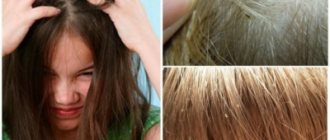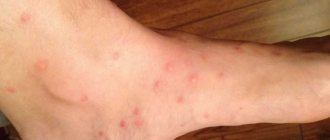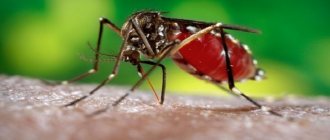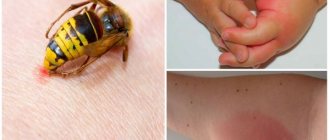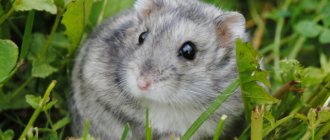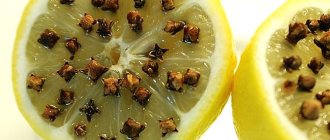- Routes of infection
- How do fleas appear in guinea pigs?
- How to understand that a guinea pig has fleas, the main signs and symptoms
- What parasites can fleas be confused with?
- Flea medications for guinea pigs
- How to cure a guinea pig from fleas
Just like cats, dogs, rodents and other people with thick fur, guinea pigs also get fleas. Moreover, this is not the only type of ectoparasite that is found in these wonderful furry animals.
In addition to fleas, guinea pigs also have lice and mites. The presence of parasites significantly affects the condition and well-being of the rodent due to constant bites of blood-sucking rodents, so it is necessary to treat the animal.
Routes of infection
Fleas are known to be jumping creatures that move from one animal to another. Most often, infection with ectoparasites occurs from other pets with whom the guinea pig comes into contact. A rodent has every chance of encountering arthropods on the street, especially while walking on the grass.
In most cases, cat fleas are found on domestic rodents. This type of ectoparasite is adapted to exist both in private households and in apartments. Despite the name of the insect, the cat flea lives not only on cats, but also in the fur of dogs, domestic hedgehogs, rats and other rodents.
Reviews
Two of my pigs got infected at once. When combing, I found excrement, most likely fleas. Since I was at the dacha, it was not possible to immediately show the animals to the veterinarian. As soon as I returned to the city, I went to the nearest veterinary clinic. Ivermectin was prescribed there. After the first treatment, the parasites disappeared. I wiped the bite wounds with Chlorophyllipt (solution). It disinfects well and relieves itching.
My pig has fleas. I found the drug Insectal via the Internet. It is for fleas on birds and rodents. I recommend to everyone. This is a spray. I applied it to the pet, gently lifting the fur. The instructions say that it is better not to apply to the spine. There the pig can lick it off. There is also an age limit - from 6 months.
How do fleas appear in guinea pigs?
Blood-sucking parasites live by feeding on the blood of their hosts. Insects pierce the skin and, secreting saliva to impair blood clotting, absorb it.
Guinea pigs also suffer from flea bites. The more parasites, the more problems they cause for the animal. The rodent constantly itches, literally tears its skin from itching, as a result of which wounds appear and dermatitis develops.
You can check to see if your guinea pig has fleas using a simple fine-tooth comb. It is enough just to hold it against the animal's fur. If at least one parasite is found there, you need to start treatment as soon as possible.
Symptoms of parasite infestation
The symptoms of lice and fleas are almost identical. Inexperienced owners can easily confuse them. Lice most often infect the head and neck.
They are much smaller than fleas. They have an oval body with a characteristic yellowish tint. A characteristic sign of lice is white nits, which are firmly attached directly to the hairs themselves.
It is easy to become infected with lice through direct contact or through litter.
But such lice are not dangerous for humans.
There are two types of ticks that infect mumps:
- Itchy.
- Fur.
With mites, the itching is so severe that the baby literally convulses. Such a defeat is a real test for the pig’s body. Pregnant individuals even have a risk of miscarriage.
Symptoms of tick infestation:
- itchy skin;
- rough skin areas appear;
- There are places where hair falls out.
Externally, mites resemble particles of dandruff. Therefore, identifying them is very difficult. Infection occurs only through direct contact.
If you start the right treatment, you can get rid of ticks quickly.
If you have any suspicions, it is better to take your pig to the veterinarian. He will accurately determine whether there is cause for concern. He has a microscope at his disposal, under which he can easily detect any parasite on the fur.
Preparations containing ivermectin are used. It is recommended to treat the animal's fur several times at intervals of 7-10 days.
If you have more than one pig, you need to treat all of them at once, as well as other pets. For prevention, they are treated once.
The cage can be treated with sulfuric lime.
We suggest you read: How to get rats out of the house using folk remedies
Lice eater (leaf eater)
This is a sucking arthropod. Outwardly, it resembles a tick. They are more often found in the muzzle area, as they prefer short hairs.
Owners should be aware of possible symptoms:
- Hair falls out. This is one of the clear signs that the animal has been attacked by parasites. Characteristic bald spots appear. Often they have redness, a wound, or scratching.
- Unhealthy inflamed skin. At the site of the bite, the skin becomes inflamed and infected with bacteria. Crusts, bruises, and scabs may appear.
- The animal often itches, twitches, and becomes irritated. Fleas do not provide pain relief, so the pig suffers from every bite.
- Traces of excrement on fur and skin. They look like black specks. This is undigested blood. The more fleas, the more excrement.
Pigs need to be combed frequently with a special fine-tooth comb. While scratching, adult parasites can be detected.
The animal develops anemia, eczema, allergies, and suppuration may appear.
It is important to understand what parasite has settled on the animal.
Fleas have a brown, elongated body. It is flattened on the sides. There are characteristic spike-hooks on the legs and abdomen. However, you can only see them under a magnifying glass. Fleas jump far. When combing, adults or their feces may remain on the teeth.
To understand whether you have found an insect or its excrement, you can drop alcohol on the find. If a red color appears, it is excrement containing blood.
Guinea pigs are one of the cleanest animals, always rummaging through their own fur. This is why it is so difficult to distinguish between standard hygiene procedures and anxiety. Do guinea pigs have fleas? First of all, you should take a close look at the animal. Excessive anxiety, as well as keratinized crusts on his skin, can signal an invasion.
However, when it comes to detecting fleas, then simply part the thick fur of a small pupil, and the jumping insects will be visible even to the naked eye. In this case, it is important to promptly begin treatment for bloodsuckers.
Symptoms of infestation in rodents:
- excessive worry;
- local baldness;
- increasing itching;
- skin damage;
- a large amount of dandruff;
- the physical presence of insects in the fur.
Please note that even if a guinea pig has fleas, the animal will be inert to multiple parasite bites. Be that as it may, it is imperative to get rid of them, not only from the fluffy’s fur, but also from its habitat.
Small pests are very often infected with dog or cat fleas, therefore the danger is comparable. They can carry a huge number of infections: typhus, plague and even anthrax. For some helminths, adults are carriers. Do not forget about the high rate of reproduction of fleas, which can settle throughout the entire house in a few days.
How to understand that a guinea pig has fleas, the main signs and symptoms
Arthropods have a brown body, slightly flattened and elongated. On the long legs of fleas there are spines and hooks that hold them on the fur of pets. If a guinea pig has fleas, then after combing, parasites or small dark lumps - their feces - will be found on the comb.
The identified pellet must be carefully examined under a magnifying glass. The flea will move its legs and jump away at the first opportunity, but if the discovered lump does not show signs of life, you need to conduct a simple experiment by dropping ethyl alcohol on it. A red-colored piece of feces will confirm the presence of parasites.
You can tell if a guinea pig has fleas by its restless behavior, frequent shaking, and scratching. In the presence of ectoparasites, the skin of an animal is hyperemic, and in places of bites it is covered with crusts and scabs. At an advanced stage, bald spots and bruises appear under the fur.
Prevention
Proper care and timely prevention can minimize the risk of infection for your pet.
- If an animal is taken outside for walks, it must first be treated with special sprays that will repel parasites.
- To prevent pests from infesting the cage, it must be washed weekly with flea shampoo. The smell of additives in such products repels bloodsuckers.
- Since ticks often dig into the delicate skin of pigs, it is recommended to treat the animal with special protective preparations before a walk. If a fence has been built for your pet to walk outdoors, you should check the fur twice a day for the presence of parasites. Pay special attention to the ears, stomach and armpits.
- To understand whether there is a tick in the fur, you just need to stroke the pig - the arthropod that has begun to feed can be easily felt by the hand.
Guinea pigs very often have various skin parasites. Each type has its own way of dealing with it, and problems can be treated “in bulk.” But still, the best way out is to prevent their occurrence, for which you should secure the walking area, regularly treat the cage and pay attention to the rules of keeping a pet.
What parasites can fleas be confused with?
All ectoparasites that can exist on rodents differ from each other. However, many people confuse lice and fleas in guinea pigs. Unlike fleas, the body of a lice has a round shape, and pediculosis can be identified by the presence of nits attached to the hairs of the fur.
Lice, like fleas, are contracted by guinea pigs from other animals. Pediculosis diagnosed in a guinea pig is not dangerous to humans. Over time, the rodent develops papular rashes and peelings under its fur, especially on the head and near the ears.
Another ectoparasite that is found in guinea pigs is the mite. Both fur and scabies mites can be detected in a domestic rodent. A characteristic feature of this form of entomosis is severe itching, in which it seems as if the pet is having convulsions.
Tick infestations are especially dangerous for pregnant female guinea pigs. Externally, the fur mite resembles dandruff, so it is not possible to recognize the parasite at home. If an animal suffers from severe itching, but does not have fleas or lice, it is necessary to show the rodent to a veterinarian - in the clinic, ticks can be seen using a microscope.
The most common diseases of guinea pigs
Diseases of pigs can be divided into 5 groups:
- The first group is diseases caused by improper nutrition and maintenance. The most common health problems.
- Genetic defects. They are registered in cases where males and females who are carriers of the “defective” gene mate. Often these “defective” pigs are sold at poultry markets, since sellers do not monitor the cleanliness of the line, striving only for profit.
- Infectious diseases (bacteria, viruses, fungi). Fortunately, infectious diseases in guinea pigs are not recorded very often, since they are rarely taken outside and have no contact with other animals. However, you should not relax and assume that since your pet sits in a cage for days, then it will not get sick with anything contagious or dangerous.
- Parasitic diseases. Both skin and intestinal parasites can cause a guinea pig to not eat anything, become sad, lethargic, and thin. The appearance of the animal is not pleasing to the eye.
- Injuries. Rodents are small, fragile, and have thin bones, so rough and careless handling of them can lead to serious injury. For example, if you leave a pig running around on the floor, you might accidentally step on it. Or a child will take the rodent in his arms and want to cuddle it, as a result of which he may inadvertently break bones, severely squeeze internal organs, or even drop it to the floor.
- Most often, eye diseases are recorded in rodents. This includes conjunctivitis and cataracts (often diabetic). In pigs, a bone formation called a limbus often appears on the outer surface of the eye.
- Another disease that is recorded in overseas rodents is pseudotuberculosis (a disease of bacterial etiology). With it, nodules form on the affected organs/tissues. With pseudotuberculosis, the animal has loss of appetite (followed by exhaustion), diarrhea, even paralysis. Treatment of the animal should take place exclusively in a hospital, but not at home!
- Sometimes paratyphoid fever is registered in pigs, during which the pet’s appetite disappears (the animal does not eat anything), the fur becomes ruffled, the eyes become dull, diarrhea and lethargy appear. As soon as the owner notices such symptoms, he should immediately ensure that the animal is examined by a veterinarian. The doctor will select treatment, prescribe antibiotics, as well as a drug that will destroy the causative agent of the disease (so-called bacteriophages).
- If the animal’s fur near its nostrils becomes wet, coughing and sneezing appears, the baby rubs its nose with its paws, breathes wheezingly and heavily, then it may be pasteurellosis (humans can also have this disease). What to do in this case? Contact a veterinarian immediately (alas, the animal will have to be euthanized, because treatment almost always fails)!
- Not only the respiratory system suffers in a guinea pig, but the digestive system often “fails.” It’s one thing if the problem is improper feeding, in this case it will be enough to change the diet. But diarrhea, vomiting and loss of appetite (the pig doesn’t eat anything, even the most favorite treats) are associated with much more serious illnesses (for example, infectious diseases).
- Rickets is registered in dogs, guinea pigs, and humans. With a lack of calcium and vitamin D in the diet, the bones become soft, brittle, easily bent and broken. And if you feed the rodent incorrectly, do not give it vitamin supplements, and keep it in a dark corner, then the rodent will get sick very quickly.
We suggest you read: How to treat fungus with vinegar essence
Flea medications for guinea pigs
To rid your small pet of fleas, you need to purchase medications for external use. Before purchasing, you should consult a doctor, since the range of anti-flea drugs for rodents is practically absent in Russia.
Most anti-ectoparasite shampoos, powders, sprays and drops are designed for cats. However, they cannot be used if the animal weighs less than 1 kg. Adult male guinea pigs can exceed this mark, while the average body weight of females is 700-800 g, which means it is impossible to use such drugs.
Judging by the reviews of users who treated fleas in domestic rodents, animals best tolerate products containing pyrethrin. The list of drugs includes:
- Spray "8 in 1";
- "Bolfo";
- Flea&Tick;
- Frontline;
- Beaphar;
- "Bars" (available separately for rodents).
It is advisable to treat your pet in the fresh air or near an open window.
Treatment
Flea therapy involves the external use of special products. They need to be purchased at a veterinary pharmacy. The range of such drugs is quite large. However, you should only choose a medicine that is intended for guinea pigs.
Video: Guinea pig treatment
Choice of product
Today, manufacturers of animal medicines present several effective products that help quickly remove fleas from pets.
They are produced in the following forms:
- shampoos;
- sprays;
- powders;
- drops.
Find out also how much guinea pigs cost.
It is best to use drugs whose main active ingredient is pyrethrin. Of these, we can recommend sprays from Biogrum Flea&, Tick, Beaphar 8 in 1. These products are considered the most gentle. They cause minimal harm to the animal. Stronger drugs are those based on synthetic analogues of pyrethrin. The most popular among them are Frontline, Bars, Acaromectin, Bolfo.
How to use it correctly
There are several rules for using external agents to remove ectoparasites. They must be known and applied so as not to harm the pet.
Important! Products intended for cats or dogs should not be used to treat guinea pigs. Such preparations contain a high concentration of the active substance, which can lead to rodent poisoning.
Among the main precautions when using antiparasitic drugs are the following:
- Avoid contact of the product with mucous membranes and face.
- Apply the product against hair growth.
- After treatment, pick up the animal and hold it until the fur dries.
- If there are several pets in the house, then each of them should be treated, otherwise the treatment will be in vain.
- After a week, it is advisable to re-treat the rodent, since at this time a new generation of parasites may hatch from the nits.
- You cannot carry out self-treatment on pregnant women, babies under 6 weeks of age, weak or elderly individuals. For them, you should choose a natural-based product.
- If the drug comes into contact with the human body, immediately rinse the skin and mucous membranes with plenty of water.
- At the time of treatment, you should not eat, drink or smoke.
Anti-flea shampoo is used like a regular hygiene product. A small amount is applied to the wool, lathered, and then rinsed off.
Pay attention to the descriptions and photos of the most common breeds of guinea pigs.
The spray must be applied as follows:
- Open the windows in the room or take the rodent out onto the balcony.
- Shake the bottle well to distribute the active substance evenly.
- Place the sprayer at a distance of 20 cm from the fur.
- Process the animal's body sequentially, starting with the head and ending with the tail.
- Proceed to processing the litter at the rate of 4 pumps per 1 m².
- After treating the cage, the animal should not be allowed into it for three days.
Dry products - powders, powders - should be applied to the coat and rubbed into the skin against hair growth. When choosing a drug in the form of drops, before using it, you must make an aqueous solution from it according to the instructions. Treatment is carried out by spraying or bathing.
How to cure a guinea pig from fleas
To ensure that the use of anti-flea agents brings the expected effect, veterinarians give the following recommendations:
- Try to avoid getting the drug on the animal's face and eyes.
- The skin must be treated with insecticides against hair growth.
- After completing the procedure, the pet should be wrapped in a towel and kept until dry.
- If, in addition to the guinea pig, there are other animals with fur in the house, they should also be treated.
- The disinfection session must be repeated a week later - this is guaranteed to get rid of those fleas that at the time of the previous procedure had not yet hatched from the eggs.
In advanced cases, your pet may be given a flea vaccination. This method of prevention is the most effective. But, due to toxicity, the insecticidal vaccine is rarely used even for large animals, not to mention guinea pigs.
